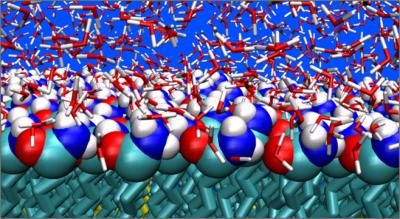Researchers establish equations that maximise the production of bio products from pruning waste of olive trees
Researchers at Jaen University (UJA) have found a mathematical method that enables them to take more efficient advantage of pruning waste from olive trees to produce bio products, such as ethanol and xilitol. The model, which was designed by the Bioprocesses Group at UJA, led by Alberto J. Moya López, has enabled scientists to determine the mathematical model to obtain – in the best possible conditions - the sugars resulting from the chemical transformation of the pruning waste from olive trees. From these sugars, products are subsequently obtained, such as ethanol for biofuels, or xilitol, which can be used in the agrifood industry.
Scientists at UJA have applied the equations for a hydrolysis model. In their research they have had the collaboration of Jaen University's Department of Mathematics. "The goal is to find the ideal time and temperature to reach maximum production", explains Professor Moya López.
"The process analysis is complicated as innumerable reactions take place, both those of interest and others that produce unwanted products that would have to be eliminated or their generation minimised. For this reason, a preparation stage needs to be incorporated once the hydrolysed solution has been obtained and prior to its fermentation. Our main goal during this procedure has been to obtain a mathematical model, using kinetic equations, that will enable us to determine the optimum production of fermentable sugars, thus making the process profitable," comments the researcher.
As Alberto J. Moya López explains, "once the waste has been collected it is ground down to reduce it to homogenous sizes and then the sugars are obtained by acid hydrolysis, which attacks the waste structure. This attack occurs both in the hemicellulosic and cellulosic fraction. In the former case, this would generate pentosa -mainly xylose- that could be used to produce xilitol, a compound that can be used, for example in chewing gum, while the attack in the cellulosic fraction would produce glucose, which can be used to produce ethanol."
"The main novelty in this study lies in that it establishes mathematically the optimum conditions in which the process should be carried out for it to be profitable from an industrial perspective. Up until now there has been no industrial applications of interest for the waste from pruning olive trees, although research into this field is steadily growing and covering greater scope: manufacture of pellets or compost, and electricity power generation, etc., However, it should be noted that obtaining either ethanol or xilitol by this process is still not profitable, though it does have a promising future", concludes the researcher Alberto J. Moya López.
Most read news
Topics
Organizations
Other news from the department science
These products might interest you
 New
New
Fully automated hydrogenation reactor BR/H2 by Berghof
Fully automated hydrogenation reactor: Precise and safe hydrogenation at the flick of a switch
Optimised process control with leakage tests, gas consumption measurement and modular expandability

BRC - Berghof Reactor Controller by Berghof
BRC - complete package for data acquisition, storage and control of all process parameters
Touch controllers are easy to use and provide quick access to all important functions

Berghof Reaktortechnologie - Hoch- und Niederdruckreaktoren, Druckbehälter und metallfreie Reaktoren by Berghof
Safe high- and low-pressure systems for aggressive media
Corrosion-resistant reactors with PTFE lining - individually configurable

Get the chemical industry in your inbox
By submitting this form you agree that LUMITOS AG will send you the newsletter(s) selected above by email. Your data will not be passed on to third parties. Your data will be stored and processed in accordance with our data protection regulations. LUMITOS may contact you by email for the purpose of advertising or market and opinion surveys. You can revoke your consent at any time without giving reasons to LUMITOS AG, Ernst-Augustin-Str. 2, 12489 Berlin, Germany or by e-mail at revoke@lumitos.com with effect for the future. In addition, each email contains a link to unsubscribe from the corresponding newsletter.

























































